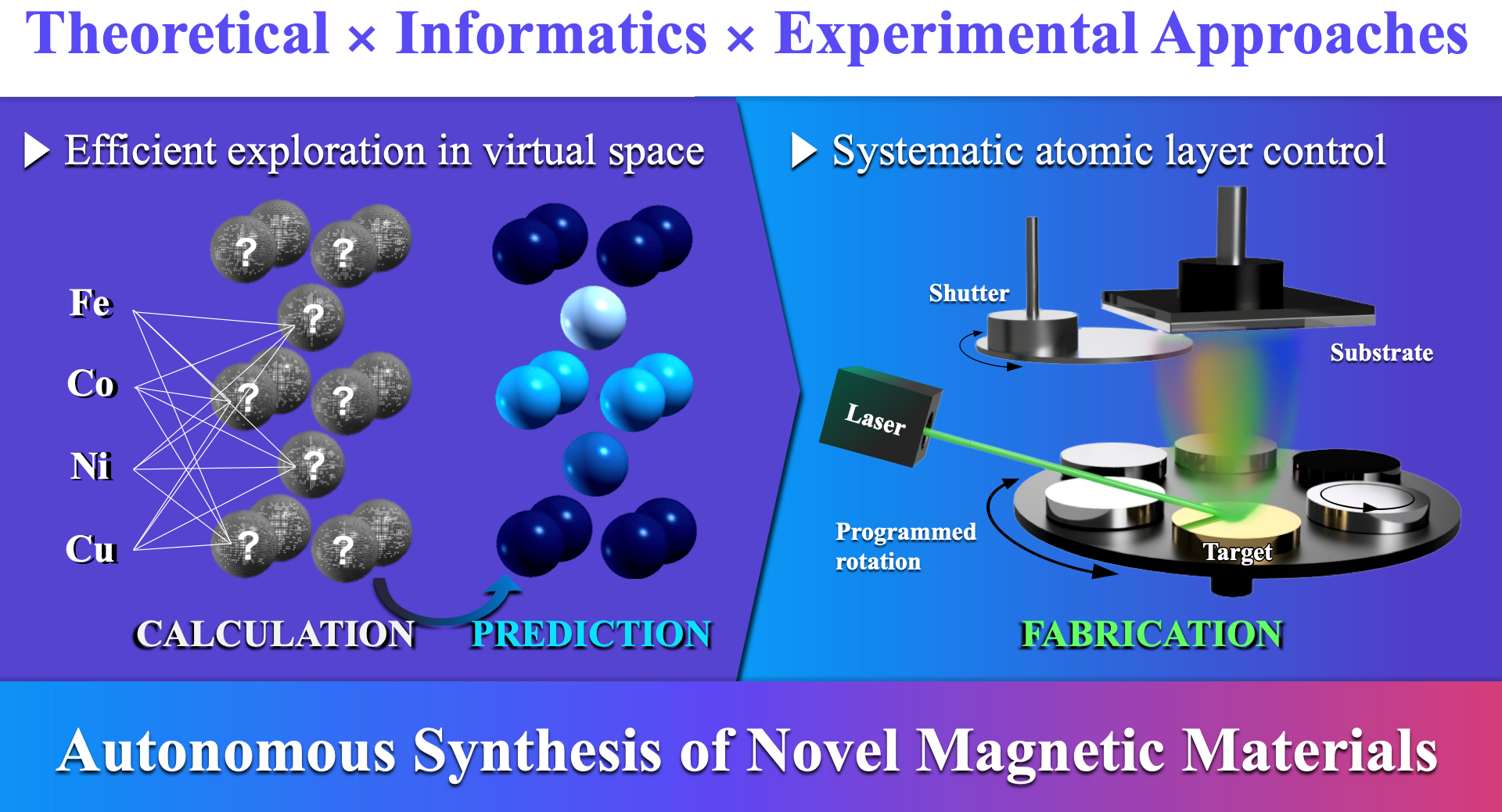In materials science, candidates for novel functional materials are usually explored in a trial-and-error fashion through calculations, synthetic methods, and material analysis. However, the approach is time-consuming and requires expertise. Now, researchers from Japan have used a data-driven approach to automate the process of predicting new magnetic materials. By combining first-principles calculations, Bayesian optimization, and monoatomic alternating deposition, the proposed method can enable a faster development of next-generation electronic devices.

Image Credit: Tokyo University of Science
Materials scientists are constantly on the lookout for new “functional materials” with favorable properties directed towards some application. For instance, finding novel functional magnetic materials could open doors to energy-efficient spintronic devices. In recent years, the development of spintronics devices like magnetoresistive random access memory—an electronic device in which a single magnetoresistive element is integrated as one bit of information—has been progressing rapidly, for which magnetic materials with high magnetocrystalline anisotropy (MCA) are required. Ferromagnetic materials, which retain their magnetization without an external magnetic field, are of particular interest as data storage systems, therefore. For instance, L10-type ordered alloys consisting of two elements and two periods, such as L10-FeCo and L10-FeNi, have been studied actively as promising candidates for next-generation functional magnetic materials. However, the combination of constituent elements is extremely limited, and materials with extended element type, number, and periodicity have rarely been explored.
What impedes this exploration? Scientists point at combinatorial explosions that can occur easily in multilayered films, requiring a great deal of time and effort in the selection of the constituent elements and material fabrication, as the major reason. Besides, it is extremely difficult to predict the function of MCA because of the complex interplay of various parameters including crystal structure, magnetic moment, and electronic state, and the conventional protocol relies largely on trial and error. Thus, there is much scope and need for developing an efficient route to discovering new high-performance magnetic materials.
On this front, a team of researchers from Japan including Prof. Masato Kotsugi, Mr. Daigo Furuya, and Mr. Takuya Miyashita from Tokyo University of Science (TUS), along with Dr. Yoshio Miura from the National Institute for Materials Science (NIMS), has now turned to a data-driven approach for automating the prediction and synthesis of new magnetic materials. In a new study, which was made available online on June 30, 2022 and published in Science and Technology of Advanced Materials: Methods on July 1, 2022, the team reported their success in the development of material exploration system by integrating computational, information, and experimental sciences for high MCA magnetic materials. Prof. Kotsugi explains, “We have focused on artificial intelligence and have combined it with computational and experimental science to develop an efficient material synthesis method. Promising materials beyond human expectation have been discovered in terms of electronic structure. Thus, it will change the nature of materials engineering!”
In their study, which was the result of joint research by TUS and NIMS and supported by JST-CREST, the team calculated MCA energy through first-principles calculations (a method used to calculate electronic states and physical properties in materials based on the laws of quantum mechanics) and performed Bayesian optimization to search for materials with high MCA energy. After examining the algorithm for Bayesian optimization, they found promising materials five times more efficiently than through the conventional trial-and-error approach. This robust material search method was less susceptible to influences from irregular factors like outliers and noise and allowed the team to select the top three candidate materials—(Fe/Cu/Fe/Cu), (Fe/Cu/Co/Cu), and (Fe/Co/Fe/Ni)—comprising iron (Fe), cobalt (Co), nickel (Ni), and copper (Cu).
The top three predicted materials with the largest MCA energy values were then fabricated via the monoatomic alternating stacking method using the laser-driven pulsed deposition technique to create multilayered magnetic materials consisting of 52 layers, namely [Fe/Cu/Fe/Cu]13, [Fe/Cu/Co/Cu]13, and [Fe/Co/Fe/Ni]13. Among the three structures, [Fe/Co/Fe/Ni]1 showed an MCA value (3.74 × 106 erg/cc) much above that of L10-FeNi (1.30 × 106 erg/cc).
Furthermore, using the second-order perturbation method, the team found that MCA is generated in the electronic state, which has not been realized in previously reported materials. This attests to the suitability of employing Bayesian optimization to identify electronic states that are likely impossible to envision through human experience and intuition alone. Thus, the developed method can autonomously search for suitable elements to design functional magnetic materials. “This technique is extendable to advanced magnetic materials with more complicated electronic correlations, such as Heusler alloys and spin-thermoelectric materials,” observes Prof. Kotsugi.
With these findings, the study sets the groundwork for automating the synthesis of hitherto-unexplored high-performance functional materials, which could enable the production of high-speed, energy-saving electronic devices and even pave the way for a carbon-neutral society!
Reference
Title of original paper: Autonomous synthesis system integrating theoretical, informatics, and experimental approaches for large-magnetic-anisotropy materials. Journal: Science and Technology of Advanced Materials: Methods. DOI: https://doi.org/10.1080/27660400.2022.2094698
ource: https://www.tus.ac.jp/en/